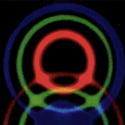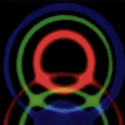Stretching out entanglement
Successful quantum information processing requires that many building blocks—initialization of quantum states, storage of qubits over long times, devices for achieving entanglement, and final state readout—all operate together in a robust way. “Clock states”—pairs of atomic levels whose energy difference is insensitive to the trapping magnetic fields—are strong contenders for robust quantum information storage, provided they can store quantum information with high fidelity. Now collaborators from the University of Innsbruck and the Austrian Academy of Sciences report that the entanglement of optical qubits can be transferred with high fidelity onto hyperfine levels of a calcium ion with storage times of nearly .
The fundamental challenge for quantum information processing is how to preserve the fidelity of the system during each manipulation of the qubits in the presence of errors and decoherence. A promising approach is to carry out the entanglement on an optical transition of an atom, which is suited to high-fidelity operations, but then transfer the entanglement to clock states that are good at long-duration storage.
The research team successfully achieved this entanglement transfer in . They used a combination of laser and microwave excitation to entangle the optical transitions in two calcium ions. Normally this entanglement would decay rapidly ( fidelity after ). However, if laser pulses are used to transfer the entanglement to the hyperfine levels, a fidelity of can be maintained after . Even longer coherence times may be possible with such schemes, which will be essential for ion-based quantum computing. – David Voss





